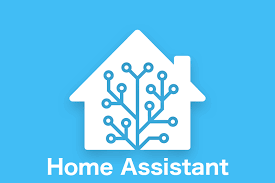Ultimate Guide to Home Assistant: Features, Installation, and ESP8266 Integration
Introduction
Home Assistant is an open-source platform designed to help you automate your home, providing seamless integration with a variety of smart devices. Whether you’re looking to control your lights, manage security systems, or even monitor your energy usage, Home Assistant offers a comprehensive solution that’s both powerful and user-friendly.
In this guide, we’ll explore Home Assistant’s key features, the installation process, and how to integrate ESP8266 for custom IoT projects. By the end of this article, you’ll be equipped to transform your home into a smart haven.
Key Features of Home Assistant
Home Assistant boasts a myriad of features that make it a top choice for home automation enthusiasts. Here’s a breakdown of its most compelling features:
1. Device Integration
Home Assistant supports over 1,000 devices and services, from Philips Hue and Google Assistant to custom integrations with DIY IoT devices.
- Control devices locally or through cloud-based services.
- Create automations that trigger based on time, location, or device status.
- Supports MQTT, Zigbee, Z-Wave, and more for broad device compatibility.
2. User-Friendly Interface
The platform provides a customizable dashboard, allowing users to tailor the interface to their preferences. With a drag-and-drop UI, creating and managing automations is straightforward.
3. Security and Privacy
Home Assistant places a strong emphasis on privacy, keeping all your data locally unless you choose to use external cloud services. This makes it a secure option for users concerned about data security.
4. Open-Source and Community-Driven
Being open-source, Home Assistant benefits from a vibrant community of developers and users who continuously contribute to its development, ensuring it remains up-to-date with the latest smart home technologies.
Installation Guide
Setting up Home Assistant is straightforward, with various installation methods available depending on your preferred platform. Below, we’ll cover the basic installation process for the most common environments.
1. Installing on Raspberry Pi
The Raspberry Pi is one of the most popular platforms for running Home Assistant. Follow these steps to get started:
- Download the Home Assistant image for Raspberry Pi from the official website.
- Flash the image onto an SD card using a tool like Balena Etcher.
- Insert the SD card into your Raspberry Pi and power it on.
- Access Home Assistant by navigating to http://homeassistant.local:8123 in your web browser.
2. Installing on Docker
For those already familiar with Docker, installing Home Assistant within a Docker container is another option. Here’s how to do it:
- Ensure Docker is installed on your system. If not, follow the Docker installation guide.
- Run the following command to create a Home Assistant container:
docker run -d --name homeassistant -v /path/to/your/config:/config --net=host homeassistant/home-assistant- Once the container is running, access Home Assistant by visiting http://localhost:8123.
Integrating ESP8266 with Home Assistant
The ESP8266 is a popular microcontroller for DIY IoT projects. Integrating it with Home Assistant allows you to create custom devices and sensors for your smart home. Here’s how to set it up:
1. Flashing ESP8266 with ESPHome
ESPHome is a tool that simplifies the process of integrating ESP8266 devices with Home Assistant. Follow these steps to get started:
- Install ESPHome using the official guide.
- Create a new configuration for your ESP8266 device in ESPHome.
- Flash the configuration to your ESP8266 using a USB cable.
- Once flashed, the device will automatically connect to Home Assistant.
2. Creating Automations with ESP8266
After integrating your ESP8266 device, you can create automations based on sensor data, device status, or time-based triggers. Here’s a simple example:
- id: 'example_automation'
alias: Turn on light when door opens
trigger:
platform: state
entity_id: binary_sensor.door_sensor
to: 'on'
action:
service: light.turn_on
entity_id: light.living_roomConclusion
Home Assistant is a powerful tool for anyone looking to automate their home and create a cohesive smart home ecosystem. Its flexibility, security, and robust community support make it an excellent choice for both beginners and advanced users alike. By following this guide, you should be well on your way to setting up your smart home with Home Assistant and integrating it with devices like the ESP8266 to extend its capabilities.
Further Reading
- Home Assistant Getting Started Guide
- Configuration Documentation
- ESPHome Official Site
- Raspberry Pi Official Website
- Docker Official Website
- Home Assistant Community
- Device Integrations List
- Lovelace UI Documentation
- Automation Documentation
- Zigbee2MQTT Guide
- Home Assistant Blog
- Scripting Documentation
